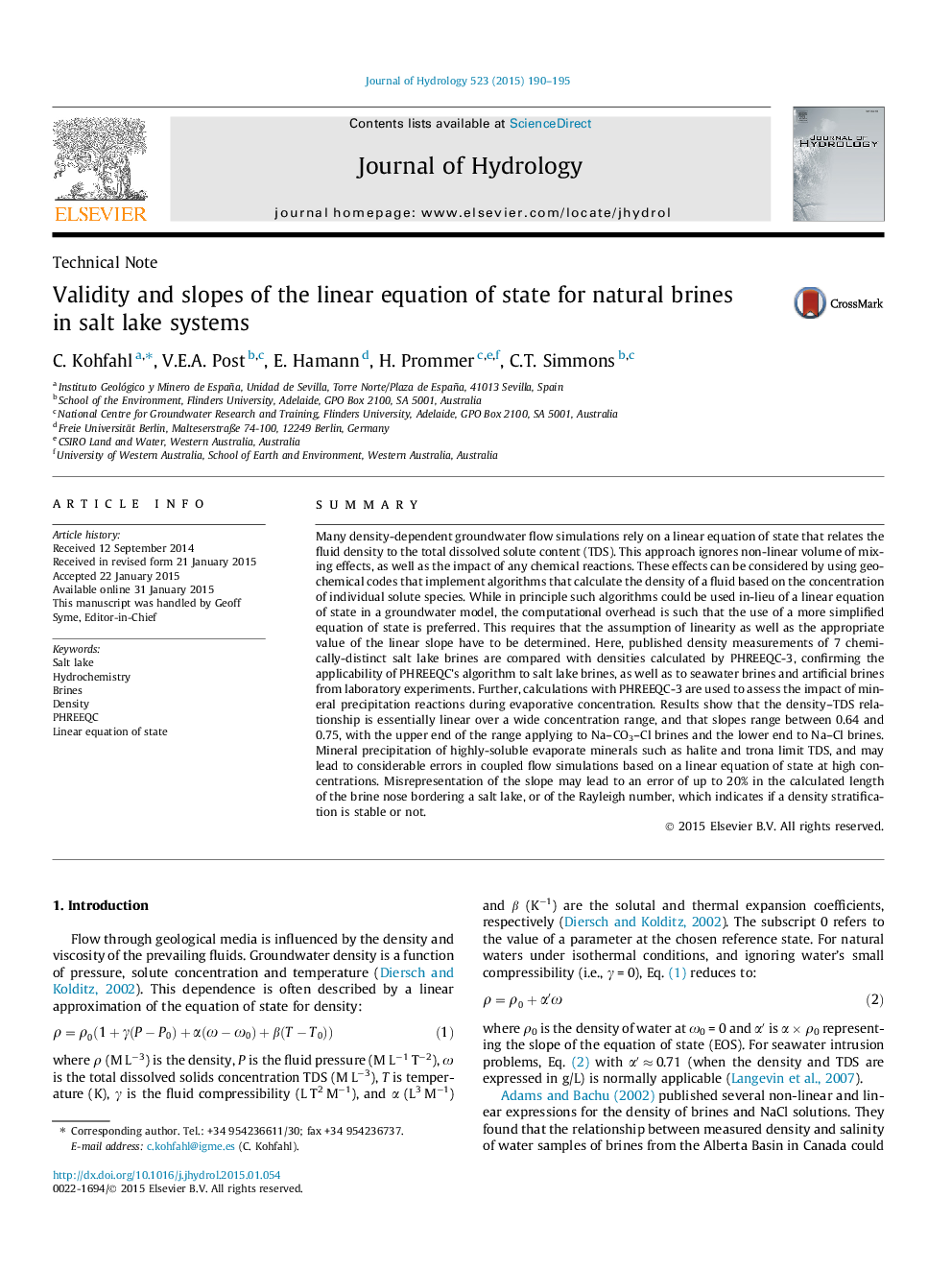| کد مقاله | کد نشریه | سال انتشار | مقاله انگلیسی | نسخه تمام متن |
|---|---|---|---|---|
| 6411667 | 1629927 | 2015 | 6 صفحه PDF | دانلود رایگان |
- The validity of the linear equation of state (EOS) for natural salt lake brines was explored.
- The dependence of the EOS on hydrochemistry was studied.
- A quantification of error related to inadequate EOS slope was made.
- Recommendations for the selection of an appropriate EOS for modelling salt lake brines are given.
SummaryMany density-dependent groundwater flow simulations rely on a linear equation of state that relates the fluid density to the total dissolved solute content (TDS). This approach ignores non-linear volume of mixing effects, as well as the impact of any chemical reactions. These effects can be considered by using geochemical codes that implement algorithms that calculate the density of a fluid based on the concentration of individual solute species. While in principle such algorithms could be used in-lieu of a linear equation of state in a groundwater model, the computational overhead is such that the use of a more simplified equation of state is preferred. This requires that the assumption of linearity as well as the appropriate value of the linear slope have to be determined. Here, published density measurements of 7 chemically-distinct salt lake brines are compared with densities calculated by PHREEQC-3, confirming the applicability of PHREEQC's algorithm to salt lake brines, as well as to seawater brines and artificial brines from laboratory experiments. Further, calculations with PHREEQC-3 are used to assess the impact of mineral precipitation reactions during evaporative concentration. Results show that the density-TDS relationship is essentially linear over a wide concentration range, and that slopes range between 0.64 and 0.75, with the upper end of the range applying to Na-CO3-Cl brines and the lower end to Na-Cl brines. Mineral precipitation of highly-soluble evaporate minerals such as halite and trona limit TDS, and may lead to considerable errors in coupled flow simulations based on a linear equation of state at high concentrations. Misrepresentation of the slope may lead to an error of up to 20% in the calculated length of the brine nose bordering a salt lake, or of the Rayleigh number, which indicates if a density stratification is stable or not.
Journal: Journal of Hydrology - Volume 523, April 2015, Pages 190-195
